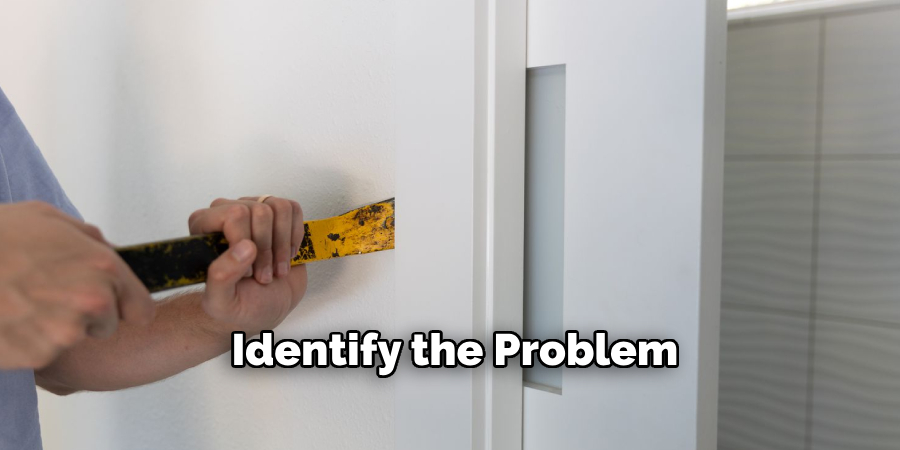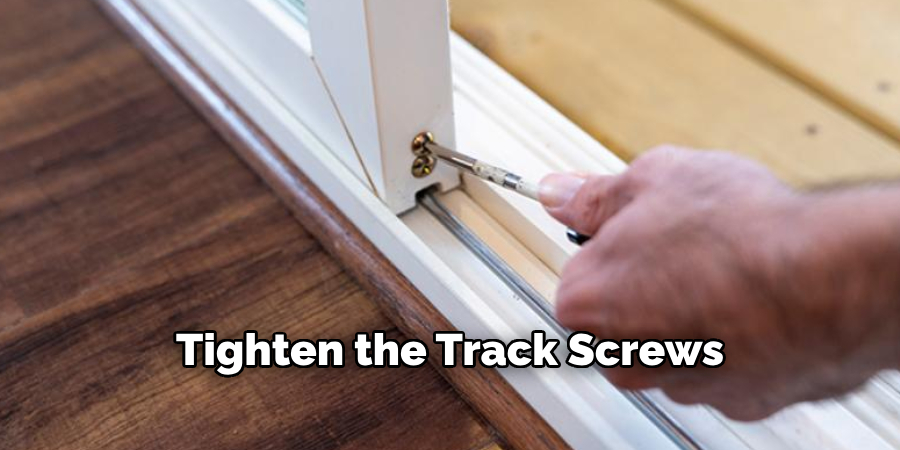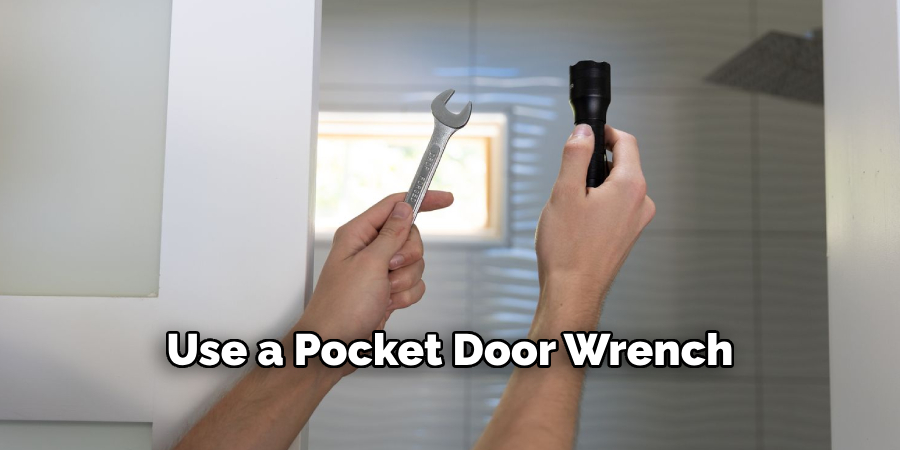Adjusting a pocket door might seem like a daunting task, but with the right guidance, it can be a straightforward process. Pocket doors, which slide into a wall compartment, are great space-saving solutions but may require occasional adjustments to ensure smooth operation.

Whether your pocket door is sticking, not closing properly, or making unusual noises, knowing how to make the necessary tweaks can keep it functioning optimally.
This guide on how to adjust a pocket door will walk you through the steps to adjust your pocket door, helping you maintain its efficiency and longevity.
What is a Pocket Door?
A pocket door is a type of sliding door that, when fully open, disappears into a compartment within the adjacent wall cavity, essentially “hiding” the door. This innovative design is particularly beneficial in areas where space is at a premium since it eliminates the need for door clearance that swinging doors require.
Pocket doors are commonly used in small bathrooms, closets, and other tight spaces, providing a seamless transition between rooms without the obstruction of a door swing. Apart from saving space, pocket doors also add a sleek and modern touch to interior design, offering both practicality and aesthetic appeal.
Why Adjust a Pocket Door?
Pocket doors, though sleek and efficient, can sometimes develop issues that necessitate adjustment. Over time, the door may begin to stick, making it difficult to open or close. This can be due to misalignment, debris in the track, or the door settling in its frame. Additionally, the door might not close properly if the hanging hardware becomes loose or if the door shifts slightly out of place. Unusual noises such as squeaking or grinding can also indicate that an adjustment is needed.

Regularly adjusting your pocket door ensures smooth operation, prolongs the door’s lifespan, and helps you avoid more significant repairs down the line. By addressing these minor issues promptly, you can maintain the door’s functionality and keep your living space efficient and aesthetically pleasing.
Needed Materials
- Screwdriver
- Level
- Pocket Door Wrench (if Available)
- Pencil or Marking Tool
- Lubricant (optional)
8 Step-by-step Guides on How to Adjust a Pocket Door
Step 1: Identify the Problem
Before you can adjust your pocket door, it’s essential to understand what specific issue needs to be addressed. Begin by observing the door’s operation. Open and close the door several times, paying close attention to any sticking points, unusual noises, or misalignment. Check if the door is not closing completely or if the top or bottom of the door is rubbing against the frame.
Identifying the exact problem will help you determine the necessary adjustments and the tools required for the task. Additionally, inspect the track and rollers for any visible debris or signs of wear, as these can also contribute to operational issues.

Step 2: Tighten the Track Screws
If your pocket door is sticking or not closing properly, the track screws may need tightening. Use a screwdriver to tighten any loose screws along the top and bottom track of the door. This will help secure the track in place and prevent the door from shifting out of alignment.
The screws should be snug but not too tight, as this can cause the track to bend or warp. If necessary, use a level to check that the track is still straight after tightening the screws.
Step 3: Adjust the Rollers
If your pocket door is making unusual noises or has noticeable gaps along the top or bottom edge when closed, adjusting the rollers may help. Some pocket doors have adjustment screws on either side of the door near the bottom rollers. Use a screwdriver to turn these screws counterclockwise to raise them and clockwise to lower them.
Adjusting both sides evenly will help keep the door in alignment and reduce any rubbing or noise caused by uneven weight distribution. Once adjusted, test the door’s operation to see if there is any improvement.

Step 4: Check for Alignment
If the door still does not close properly or makes unusual noises after adjusting the rollers, it may be out of alignment. To check this, use a level and place it on top of the door while it is closed. If one side of the door is higher than the other, you will need to adjust the top track accordingly.
Loosen the screws holding the track in place and gently shift it up or down until both sides are even. Then, retighten the screws and test the door again. Repeat this process until the door closes smoothly without any gaps or rubbing against the frame.
Step 5: Use a Pocket Door Wrench
For pocket doors with a dedicated adjustment tool, such as a pocket door wrench, adjusting the rollers and alignment can be easier. The wrench allows you to adjust both sides of the door simultaneously for more precise and even adjustments.
Follow the manufacturer’s instructions for using the wrench or refer to an online tutorial if needed.
Step 6: Lubricate the Track and Rollers (Optional)
If your pocket door is sticking or making unusual noises even after adjusting it, adding lubricant to the track and rollers may help. This will reduce friction between moving parts and allow for smoother operation. Be sure to use a silicone-based lubricant, as it will not attract dust or debris like oil-based lubricants.
Spray the lubricant onto a cloth and wipe it along the track and rollers, removing any excess with a clean cloth. Test the door’s operation to see if there is any improvement.
Step 7: Clean and Remove Debris
If none of the above steps have improved your pocket door’s operation, it may be due to debris in the track or rollers. Use a dry cloth or vacuum to remove any visible debris from these areas. For hard-to-reach places, use compressed air to blow out any dirt or buildup that might be causing issues.
Once cleaned, test the door again to see if it operates smoothly.
Step 8: Call a Professional
If, after following all the previous steps, your pocket door still does not operate correctly, it may require professional attention. A qualified handyman or carpenter can diagnose and fix any underlying issues with the door’s hardware or structure. They will also be able to replace any damaged parts if needed.
Regular maintenance and adjustments are crucial for ensuring the longevity of your pocket door. By following these step-by-step guides on how to adjust a pocket door, you can keep your living space efficient and visually appealing.

Remember to address any minor issues promptly before they become bigger problems that require more significant repairs or replacements. With proper care and maintenance, your pocket door will continue to provide functional and stylish convenience for years to come. Happy adjusting!
Frequently Asked Questions
Q: Can I Adjust a Pocket Door Without Any Tools?
A: While some adjustments may be possible with just your hands, it is highly recommended to have at least a screwdriver, level, and pocket door wrench (if available) for more precise adjustments.
Q: How Often Should I Adjust My Pocket Door?
A: It is recommended to check your pocket door’s operation every six months and make any necessary adjustments. However, if you notice any issues or changes in the door’s functionality, it is best to address them promptly.
Q: Can I Use WD-40 as a Lubricant for My Pocket Door?
A: No, it is not recommended to use WD-40 as a lubricant for your pocket door. It can attract dust and debris, which can cause further operational problems. Instead, use a silicone-based lubricant specifically designed for door tracks and rollers.
Q: Can I Adjust a Pocket Door That is Stuck Closed?
A: It may be more challenging to adjust a pocket door that is stuck closed, but it is still possible. You may need to remove the trim or molding around the door and use a pry bar or similar tool to gently nudge the door open. Then, follow the steps outlined above for adjusting the track, rollers, and alignment.
Q: Can I Adjust a Pocket Door That is Off Its Track?
A: In most cases, adjusting the rollers and alignment should help fix a pocket door that has come off its track. However, if the problem persists, it may be due to damaged or worn-out hardware and will require repair or replacement by a professional. Do not attempt to force the door back onto the track as this can cause further damage.
Conclusion
Adjusting your pocket door may seem daunting, but with the right tools and a systematic approach, you can effectively resolve common issues like sticking misalignment and unusual noises. By identifying the problem, tightening the track screws, adjusting the rollers, checking for alignment, and using a pocket door wrench if available, you can ensure smooth operation and prolong the door’s lifespan.
Remember to regularly clean the track and rollers, and consider lubricating them if necessary. If all else fails, do not hesitate to call a professional to address more complex problems. Routine maintenance and timely adjustments will keep your pocket door functional and enhance the efficiency and aesthetics of your living space. Thanks for reading this article on how to adjust a pocket door.
About
Safety Fic is a distinguished figure in the world of Diy design, with a decade of expertise creating innovative and sustainable Diy solutions. His professional focus lies in merging traditional craftsmanship with modern manufacturing techniques, fostering designs that are both practical and environmentally conscious. As the author of diy, Safety Fic delves into the art and science of Safety Fic-making, inspiring artisans and industry professionals alike.
Education RMIT University
(Melbourne, Australia) Associate Degree in Design (Safety Fic) Focus on sustainable design, industry-driven projects, and practical craftsmanship. Gained hands-on experience with traditional and digital manufacturing tools, such as CAD and CNC software.
Nottingham Trent University
(United Kingdom) Bachelor’s in diyfastly.com and Product Design (Honors) Specialized in product design with a focus on blending creativity with production techniques. Participated in industry projects, working with companies like John Lewis and Vitsoe to gain real-world insights.
Publications and Impact
In diy, Safety Fic his insights on indoor design processes, materials, and strategies for efficient production. His writing bridges the gap between artisan knowledge and modern industry needs, making it a must-read for both budding designers and seasoned professionals.
